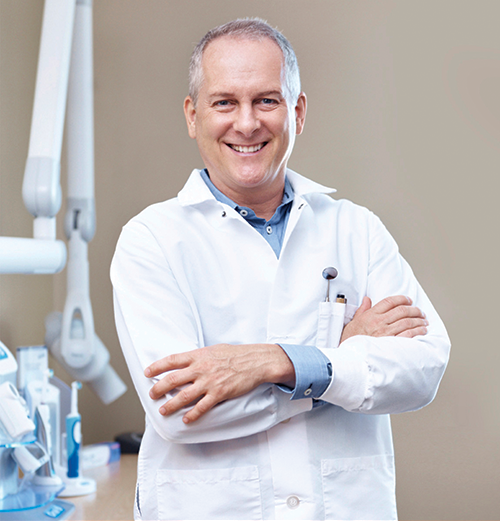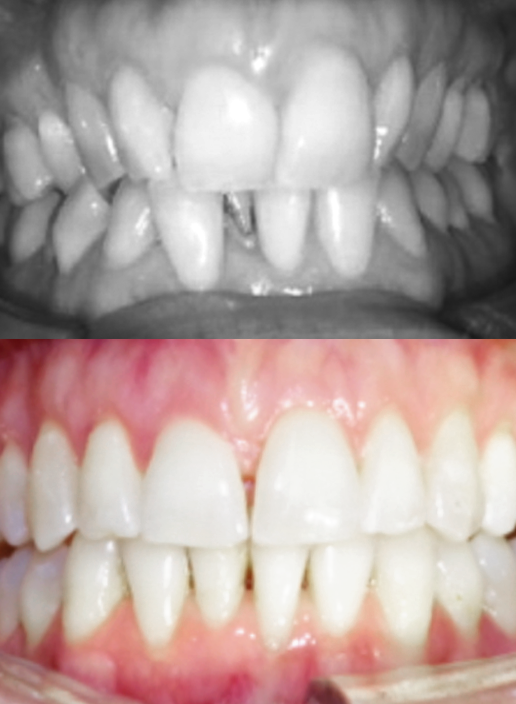Crooked teeth depend not only on genetics but also on alterations in the functions of the mouth. Malocclusion is the term that highlights this situation; it is a disharmony of the dental arches that can have aesthetic implications or manifest through various functional pains. It can refer to a group of teeth, a single arch, or the relationships between the maxilla and the mandible.
[/vc_column_text][/vc_tta_section][vc_tta_section title=”What is the right therapy?” tab_id=”1557829416947-8c02891b-411c”][vc_column_text]The right therapy is one that gives the mouth a natural, harmonious appearance, achieved through functional and non-invasive methods. The goal is to achieve balance in the mouth without creating problems in other areas of the body. This is done by encouraging the patient to use their own strengths (muscles of the tongue and mastication) and their potential for natural growth and remodeling to solve the problem of malocclusion.[/vc_column_text][/vc_tta_section][vc_tta_section title=”What is Equilibridontics?” tab_id=”1557829598968-e9bb26a9-7607″][vc_column_text]Balance and harmony are the goals of Equilibridontics, which gathers the legacy of functionalism and integrates it with the most recent scientific findings. Its approach stems from the awareness that malocclusions are always related to an alteration of the functions of the oral cavity, which in turn has profound repercussions on general health and posture. More information on this page.[/vc_column_text][/vc_tta_section][vc_tta_section title=”What appliances are used during therapy?” tab_id=”1557829673955-63e8c272-a94f”][vc_column_text]Only Eptamed equilibrators are used. These devices are chosen and modified by the dentist based on the individual patient’s needs. These modifications are a great added value, as it is almost never necessary to intervene on the patient’s teeth with occlusal raises, but only on the appliance.[/vc_column_text][/vc_tta_section][vc_tta_section title=”What are the causes of malocclusion?” tab_id=”1557829701339-6f6438af-11c9″][vc_column_text]Malocclusion is linked to a disharmony of the vital functions related to the mouth, thus:
- Breathing
- Swallowing
- Mastication
- Phonation
An adult or a child who breathes through the mouth presents a typical set of characteristics:
- Dark circles
- Fatigue during the day
- Narrow palate
- Concentration difficulties
A contracted or narrow palate means little space for teeth, resulting in crooked and overlapping teeth. By starting treatment with the equilibrator, one acts directly on improving breathing.
[/vc_column_text][/vc_tta_section][vc_tta_section title=”Does tongue position relate to crooked teeth?” tab_id=”1557829742688-0cd69f75-33ab”][vc_column_text]Each of us swallows on average 3,000 times a day, and the tongue exerts a pressure of about half a kilogram with each swallowing action. In physiology, the correct position of the tongue is for it to be high with the tip resting against the palatine spot (palate). However, for any reason—such as prolonged sucking, extended breastfeeding, bad habits, etc.—the tongue may fail to rise and remain low within the mouth. In this case, the muscles that make up the tongue push in the wrong way, generating enormous forces on the teeth and the bony bases, altering the shape of the mouth and tilting the teeth forward.[/vc_column_text][/vc_tta_section][vc_tta_section title=”How does the Equilibrator work?” tab_id=”1557829765501-1ed69500-f1ee”][vc_column_text]It is a mobile, very elastic appliance that:
- Avoids contact between the teeth, facilitating their repositioning;
- Avoids contact between the tongue and the teeth;
- Reactivates nasal breathing;
- Encourages the tongue to go to the palate;
- Rebalances the musculature of the mouth and face;
The equilibrator should be worn during sleep and for at least 1 hour during the day.
[/vc_column_text][/vc_tta_section][vc_tta_section title=”At what age can therapy begin?” tab_id=”1557829813384-879cdd43-40e9″][vc_column_text]Therapy can be started without problems at any age, ideally from 5 years old.
[/vc_column_text][/vc_tta_section][vc_tta_section title=”What is the difference between the Equilibrator® and a pharmacy-bought Bite?” tab_id=”1557829835855-b2245cd7-07ba”][vc_column_text]- The equilibrator is a medical device available in over 75 variants, chosen by a certified dentist, who carefully adapts it to the patient’s mouth; moreover, due to its shape and elasticity, it aims to rebalance the altered functions of the mouth.
- A bite purchased at the pharmacy is standard, a rigid and non-elastic device that often causes discomfort to the gums, and its use is not monitored by a dentist, with the consequent risks of self-therapy.
- A bite made by a dentist is a custom device that can be placed on the upper or lower arch, but due to its rigidity and cast shape, it does not stimulate problem resolution and only temporarily alleviates pain or issues.
The equilibrator can be used mainly in 3 cases:
- In cases of malocclusion where the dentist considers its use beneficial.
- In children, as interceptive orthodontics aimed at balance.
- In adults with various physical problems (postural pains, cervical pains, headaches, jaw clicks, snoring, sleep apnea, gastric reflux, bruxism…)
Generally, therapy lasts 2 years, but each case must be evaluated by a certified dentist.
[/vc_column_text][/vc_tta_section][vc_tta_section title=”Does the Equilibrator cause discomfort while sleeping?” tab_id=”1557829957452-5d007ed8-09f4″][vc_column_text]No, the equilibrator does not cause any discomfort, except for the first few days of use while one gets used to this new “friend.” Generally, patients find it very pleasant to wear the equilibrator.[/vc_column_text][/vc_tta_section][vc_tta_section title=”Can I wear the Equilibrator® if I have dentures or braces?” tab_id=”1557829991159-5ebe7da0-6c6f”][vc_column_text]The equilibrator can be used in any type of mouth. Even with removable dentures. Even in cases of implants, there are no contraindications.
[/vc_column_text][/vc_tta_section][vc_tta_section title=”If my teeth move, can I wear the Equilibrator?” tab_id=”1557931554302-ca5cf51a-88ac”][vc_column_text]Certainly! All teeth move, always, throughout life, some more than others. There are extreme cases of strong mobility (periodontitis) that will be evaluated individually by the dentist authorized to use Eptamed equilibrators.[/vc_column_text][/vc_tta_section][vc_tta_section title=”Is the Equilibrator recommended for dental or gum dysfunctions?” tab_id=”1557931595382-11660b75-dbff”][vc_column_text]The equilibrator, as its name suggests, tends to balance the mouth. The more balanced the mouth is, the more dental and gum dysfunctions can improve.[/vc_column_text][/vc_tta_section][vc_tta_section title=”How do you clean the Equilibrator?” tab_id=”1557931622009-0f5eac4b-6460″][vc_column_text]Cleaning the equilibrator is very simple: toothbrush, water, and toothpaste. After being thoroughly washed, it is recommended to dry it gently.[/vc_column_text][/vc_tta_section][vc_tta_section title=”Can the Equilibrator cause allergic reactions?” tab_id=”1557931650759-1253c198-0957″][vc_column_text]All Eptamed equilibrators are biocompatible and certified for their use.[/vc_column_text][/vc_tta_section][vc_tta_section title=”Can the Equilibrator also be used by children?” tab_id=”1557931690178-9c309c25-7d8b”][vc_row_inner][vc_column_inner][vc_column_text]Especially by children! In children, the results are typically achieved more quickly. Breathing, swallowing, and chewing are modified, and consequently, the mouth and teeth change.[/vc_column_text][/vc_column_inner][/vc_row_inner][/vc_tta_section][vc_tta_section title=”Can the Equilibrator be accidentally swallowed?” tab_id=”1587022776020-f759a459-67e7″][vc_row_inner][vc_column_inner][vc_column_text]Many people struggle to swallow just one tablet at a time; an equilibrator is as large as at least 20 tablets and is much larger than the esophagus itself, so it is very unlikely to happen. In small patients, adult supervision is always recommended.[/vc_column_text][/vc_column_inner][/vc_row_inner][/vc_tta_section][vc_tta_section title=”Can anyone start a treatment with the Equilibrator?” tab_id=”1557931783403-7e249131-f5d5″][vc_column_text]Absolutely! At any age, it is possible to start treatment with the Eptamed equilibrator. Obviously, the most rapid changes and results are observed in children. But even motivated adults can achieve excellent results.[/vc_column_text][/vc_tta_section][vc_tta_section title=”Can the Equilibrator have positive effects on my athletic performance?” tab_id=”1557931811714-666bdd50-bd1e”][vc_column_text]Depending on the cases and with valid medical support, the use of an equilibrator can:- Eliminate all occlusal interferences;
- Optimize stomatognathic functionality in relation to the osseous/dental, muscular, and articular structures;
- Improve postural alignment and consequently, the various structures involved in athletic activity;
- Enhance athletic performance in both quantitative and qualitative terms;
- Reduce muscle fatigue.
Answers to frequently asked questions
Why do we have crooked teeth?
Crooked teeth are influenced not only by genetics but also by alterations in the functions of the mouth. Malocclusion is the term that highlights this situation; it refers to a disharmony of the dental arches that can have aesthetic implications or manifest through various functional pains. It can pertain to a group of teeth, a single arch, or the relationships between the maxilla and the mandible.
What is the right treatment?
The goal is to attain balance in the mouth without causing issues in other areas of the body. This is accomplished by encouraging the patient to utilize their own strengths (the muscles of the tongue and chewing) and their natural growth and remodeling potential to address the problem of malocclusion.
What is Equilibriodontics?
Balance and harmony are the goals pursued by Equilibriodontics, which carries forward the legacy of functionalism and integrates it with the latest scientific advancements. Its approach stems from the awareness that malocclusions are always linked to alterations in the functions of the oral cavity, which in turn has profound repercussions on overall health and posture. For more information, visit this page.
What appliances are used during the treatment?
Only Eptamed equilibrators are used. These devices are selected and modified by the dentist based on the individual needs of each patient. These modifications provide significant added value, as it is almost never necessary to intervene on the patient’s dentition with occlusal raises, but only on the appliance itself.
What are the causes of malocclusion?
Malocclusion is related to a disharmony of the vital functions associated with the mouth, which include:
- Breathing
- Swallowing
- Chewing
- Speech
Are breathing problems linked to crooked teeth?
An adult or child who breathes through their mouth typically presents a set of characteristics:
- Dark circles under the eyes
- Fatigue during the day
- Narrow palate
- Difficulties concentrating
Does the position of the tongue have anything to do with crooked teeth?
Each of us swallows an average of 3,000 times a day, and the tongue exerts a pressure of about half a kilogram with each swallowing action. In physiology, the correct position of the tongue is with its tip resting against the hard palate (the roof of the mouth). However, for various reasons—such as prolonged sucking, extended breastfeeding, or bad habits—the tongue may struggle to move upward and remain low inside the mouth.
In this case, the muscles that make up the tongue push incorrectly, generating enormous forces on the teeth and the bony structures, altering the shape of the mouth and pushing the teeth forward.
It is a mobile, very elastic device that:
- Avoids contact between the teeth, facilitating their repositioning;
- Avoids contact between the tongue and the teeth;
- Reactivates nasal breathing;
- Encourages the tongue to rest on the palate;
- Rebalances the musculature of the mouth and face;
When should the balancer be worn?
The Equilibrator should be worn during sleep and for at least 1 hour throughout the day.
At what age can therapy be started?
The therapy can be started without any issues at any age, ideally from the age of 5.
What is the difference between the Equilibrator® and a bite bought in a pharmacy?
- The Equilibrator is a medical device available in over 75 variants, chosen by a certified dentist, who carefully adapts it to the patient’s mouth. Furthermore, thanks to its shape and elasticity, it aims to rebalance the altered functions of the mouth.
- A bite purchased at a pharmacy is standard, rigid, and non-elastic, often causing discomfort to the gums. Its use is not monitored by a dentist, leading to the risks associated with self-treatment.
- A bite made by a dentist is a custom device that can be placed on the upper or lower arch; however, due to its rigidity and mold-like shape, it does not stimulate the resolution of the problem and only temporarily alleviates pain or issues.
When is the balancer used?
The Equilibrator can be used mainly in three cases:
- In cases of malocclusion where the dentist deems its use beneficial.
- For children, as interceptive orthodontics aimed at achieving balance.
- For adults with various physical issues (postural pain, cervical pain, headaches, jaw clicking, snoring, sleep apnea, gastric reflux, bruxism…)
Is there only one size of balancer?
No, there are many different sizes, each designed for individual mouths.
Your dentist will know how to choose the most appropriate device for you.
How long does Equilibrator therapy last?
Generally, the therapy lasts 2 years, but each case must be evaluated by a certified dentist.
Does the Equilibrator cause discomfort while sleeping?
No, the Equilibrator does not cause any discomfort, except for the first few days of use while you adjust to this new “friend.”
Generally, most patients find wearing the Equilibrator very pleasant.
Can I wear the Equilibrator® if I have a denture or braces?
The Equilibrator can be used in any type of mouth.
It can also be used with removable dentures.
In the case of implants, there are no contraindications.
If my teeth move can I bring the Equilibrator?
Certainly! All teeth move, always, throughout life, some more than others.
There are extreme cases of significant mobility (periodontitis) that will be evaluated individually by the dentist qualified to use Eptamed equilibrators.
In case of dental or gum dysfunction, is the Equilibrator recommended?
The Equilibrator, as the name suggests, aims to balance the mouth.
The more balanced the mouth is, the more dental and gum dysfunctions can improve.
How do you clean the Equilibrator?
Cleaning the Equilibrator is very simple: just use a toothbrush, water, and toothpaste.
After it has been thoroughly washed, it is advisable to gently dry it.
Can the Equilibrator create allergic reactions?
All Eptamed equilibrators are biocompatible and certified for their use.
Can the Equilibrator also be used by children?
Especially in children! Faster results are typically achieved in children.
Breathing, swallowing, and chewing are modified, leading to changes in the mouth and consequently the teeth.
Can one accidentally swallow the Equilibrator?
Many people struggle to swallow just one pill at a time; an Equilibrator is about the size of at least 20 pills and is much larger than the esophagus itself, so it is very unlikely that this will happen. In young patients, however, adult supervision is always recommended.
Can all people undertake treatment with Equilibrator?
Absolutely. It is possible to start treatment with the Eptamed Equilibrator at any age.
Of course, changes and faster results are observed in children.
However, motivated adults can also achieve excellent results.
Can the Equilibrator have positive effects on my sports performance?
Depending on the cases and with valid medical support, the use of an Equilibrator can:
- Eliminate all occlusal interferences;
- Optimize stomatognathic functionality in relation to the bony/dental, muscular, and articular structures;
- Improve postural alignment and, consequently, all those structures involved in athletic activity;
- Enhance sports performance in both quantitative and qualitative aspects;
- Reduce muscle fatigue.
What is Dentosophie?
Dentosophy takes its name from the Latin dens, meaning tooth, and the Greek sophia, meaning wisdom. It is a therapy that, according to its creator Michel Montand, is “characterized by a humanistic approach to dental art, based on known functional techniques, which highlights the connection between the balance of the mouth, the balance of the human being, and more broadly, that of the entire world.” More information can be found on this page.

TREATED CASES
Adult patient, after 10 months of treatment

